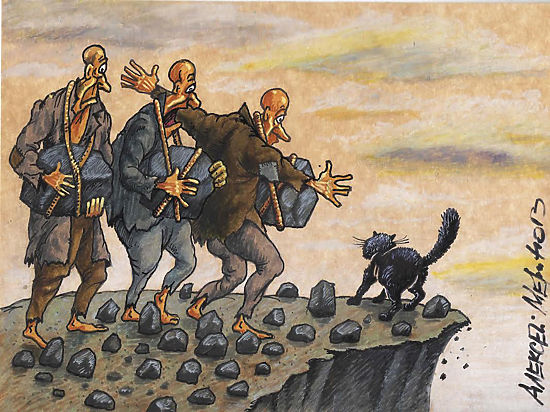Empty restaurants, gardening, lower consumption

Russians spend on food 50.1% of salary, shown by the monitoring Institute for social analysis and forecasting Ranhigs. Two years ago the figure was 3% lower. “The secret” explains how the cost of food reflects the economic situation in the country.
Almost Nigeria
Less money for food out of Americans. According to the economic research Service of the Ministry of agriculture of the USA in 2014 they spent on food at home 6.5% income and 4.5% on trips to the restaurants and cafes.
In the European countries for products less waste in Luxembourg — just 10.1% of revenues, given the costs of alcohol and tobacco (by data “RIA Ranking” for 2015). In Europe, the largest percentage of income spent on food from the Ukrainians: about 56.5 per cent. This is almost the level of Nigeria — in 2014 there gave food for 56.6% of revenue.
Bad mood
If people spend on food a greater portion of the family budget, they begin to cut expenditures in other areas. Monitoring Ranepa shows that in 2016 the share of expenses of Russians for rest and entertainment decreased by 0.2% compared with the previous year. Most often people have to abandon travel and major purchases. It spoils the mood. So, because of the refusal of leave last summer, the consumer confidence index in Russia did not show the usual growth. Traditional “post-vacation effect” — increasing financial confidence and willingness to spend money — not shown by Russians for the first time in ten years, the researchers said Nielsen.
Eat at home
In countries where the population spends on food a large percentage of their earnings, people rarely go to restaurant or cafe. The Russians left in restaurants only 3.6% of income, according to data for the year 2015. Among Europeans often go to restaurants, the inhabitants of Switzerland, leaving 10.6 percent of family income. The share of expenditure on food at home is 11.8 per cent.
Subsistence farming
<iframe id=”AdFox_iframe_57153″ frameborder=”0″ width=”1″ height=”1″></iframe>
<iframe id=”AdFox_iframe_537614″ frameborder=”0″ width=”1″ height=”1″></iframe>
High spending on products people are looking for ways to save on them. One of these could be subsistence farming. According to Rosstat, 60% of people with low income make their own canned food and stocking up for winter, and 40% of Russians grow potatoes in their own beds. The tradition of canning may become even more popular during the crisis. According to research holding Romir, 12% of respondents expect this year to deal with financial difficulties, growing vegetables and fruits in the suburban areas.
Unhealthy diet
As a rule, the cheaper the products, the easier it is to gain weight. About 70% of Russian citizens admitted in the supermarket look more like the price of the product than its quality. The population with low income and rarely eats fresh vegetables and most cereals, pasta and potatoes. The potatoes in Russia in recent years is in great demand: in 2014 alone, the network “Dixie” increase its turnover amounted to 20%.
Hunger
In countries with a high level of expenditure on foods, usually high and the level of malnutrition. This is confirmed by studies of the employees of the Washington state University, conducted in 2008. It says that the highest percentage of cases of malnutrition among children (over 40%) was in countries where the population most of the money spent on food in Pakistan and Nigeria. Then malnutrition in Russia amounted to 5-10%, of food the Russians on average spend 29% of income. Current research on malnutrition in Russia have not yet been done.
Not always poverty
Residents of countries in which to spend money on food have less, not necessarily living better. Structure of consumer expenses of the representatives of different countries differs. For example, Americans can fewer Russians spend on food but more on healthcare. The cost of paid medicine in the U.S. “eat” 20% of family income, while in Russia on this count accounts for 3.7% of income. Americans also spent more on housing in comparison with the Russians: 18,7% against 10.3%
Cover photo: PA Images








